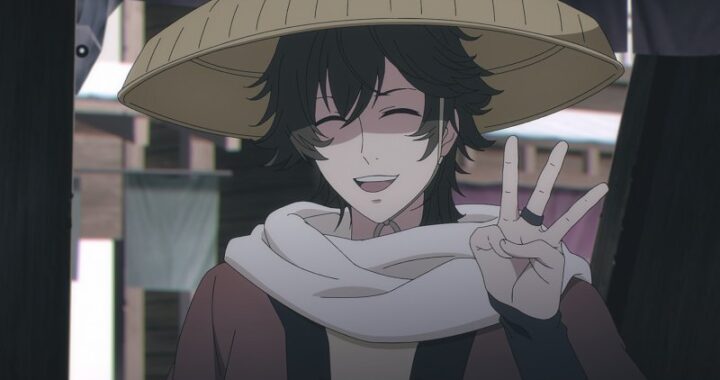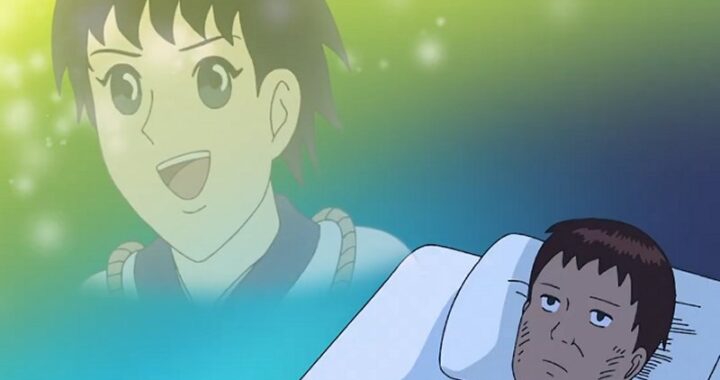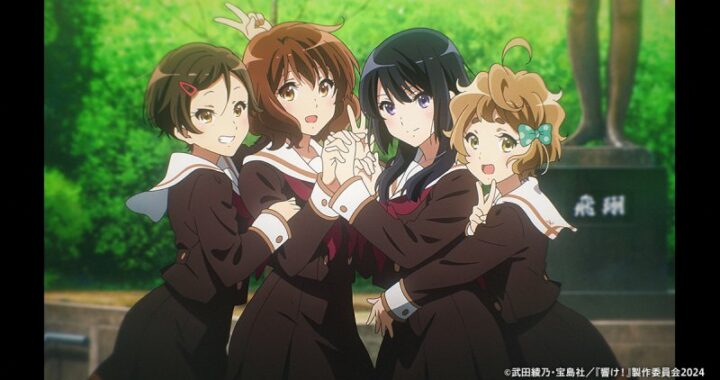BT: This comes around to the whole family of “limited animation” endings. The first that struck me was Magic User’s Club’s, the only “action” being the candy and symbols blowing out of the magic wand’s mouth. Sets that perfect lullaby mood, too. There are more precise examples, but that’s the one I go back to when I witness things that kind of scroll by with imagery-instead-of-animation.
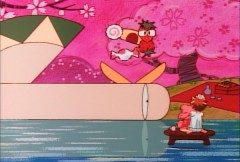
BG: Flowers of Evil and Magic User’s Club both make me think how well integrated they are with the ending scenes of the episode, with the song starting up before the ending credits start to roll. Flowers of Evil, on one hand, tends to end its episodes on an unsettling note that the song really complements when it starts up. Magic User’s Club on the other hand, winds down the episode on a sweet, relaxing note. The song, which captures Sae’s sincere but reserved feelings for her senpai, is timed perfectly with a moment where her hidden true feelings are revealed by her magic to the audience in one episode. Most episodes end on a light, magical note which the surreal imagery of the ending sequence follows up on quite nicely. The simplistic but heartwarming drawing of Sae going to sleep at the very end of the sequence emphasizes the topic of limited animation setting a mood well. Everything is well-placed about these endings.
BT: But the talk of mood reminds me of my impression that endings are, I think, divided into two large categories: random fun or contemplative. This is the fundamental nature of anime endings for me, their contemplative nature, fittingly so at the end of things. Still images or a character walking along, the sense is of that character contemplating what’s happened and maybe what’s to come—lamenting, maybe, or at a loss, or content to think nothing at all. Or so we’re led to project onto the scene. Endings like this, then, become vessels for the audience, often less kinetic moments to think, or relax from thinking.
And it seems like anime has particular imagery and symbols they use to execute this on a pretty routine basis, don’t they?
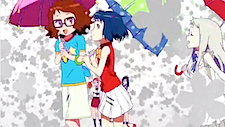
GBS: There are motifs that pop up quite often, it seems. One is, for whatever reason, umbrellas.
BT/BG: Umbrellas?
GBS: Yes, umbrellas.
BT: Well, they’re very practical items.
GBS: Indeed they are, but they also seem to be beloved of ending animation teams. I can name several examples off the top of my head, from anohana’s ending (where the umbrellas are secondary to the flowers, I grant you) to Toradora, where the three main girls have them in hand while walking, to the lovely Akatsuki strolling along the streets of Log Horizon’s Akiba, parasol in hand (our featured image).
BT: Also, for recent shows, there’s Hiyori in the ending for Noragami, in the snow. Interesting here is the blue color filter used over the animation, lending even more, I think, to the contemplative emotion of the piece. (Like Log Horizon’s though it does show some good humor in places.)

BG: Interesting to note, is that the first two examples, anohana and Toradora, were specifically storyboarded and directed by the same person, Tatsuyuki Nagai. Perhaps he likes the umbrella imagery? I like the contrasts it highlights with the Toradora ending, particularly with regards to Minori. Not just obviously with her walking style, but more subtly with her umbrella going counter-clockwise. A mix of contemplation and good humor going on here too, with that contrast.
GBS: Nice catch on Minorin’s umbrella, so fitting for the character, who definitely marches to the beat of her very own drummer. For the motif in general, I guess when you’re walking in the rain, there’s little else to do other than try to keep dry and contemplate the world around you. I wonder what imagery either of you have noticed a lot in anime?
BT: Besides blue popsicles?
G.B. Smith
Greg Smith has been writing anime reviews and a review column on anime dubbed into English for several years, first at AnimeOnDVD and now for The Fandom Post. His occasional column on English anime dubs, Press Audio, appears whenever he comes across a dub worthy of a closer look. He is also the deputy editor for our seasonal and year end retrospectives.


